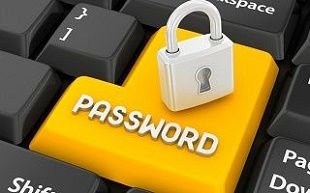STRONG PASSWORD GUIDELINES: This guide explains the two basic password rules for creating strong passwords containing unique and secure passphrase protection.
Ideally, your password strength should have enough complexity to be safe against hackers.
But secure passwords should not contain such an excessive number of characters that it becomes difficult for you to remember them.
Experts call it ‘password dilemma’ or what we call ‘password length vs. complexity‘. You might call it a tradeoff between a weak secret word for simplicity and an ultra-complex watchword in the interest of security.
Two Basic Rules for a Strong Password
- Strong Passwords Length: A strong password should contain a minimum of eight (8) characters. You can increase your password protection by adding an extra character or two. But, not all computer software permits you to do so.
- Strong Passwords Complexity: Safe passwords should have a combination of numbers, symbols (special characters), lowercase letters, and uppercase alphabetic characters. Strong password examples must always contain several special characters (e.g. “@,!,&,$), at least one capital letter (uppercase), and a number.
Treat Passwords like your Toothbrush
Having finished creating secure passwords, no matter whether they were created manually by yourself or made using an automated online strong password generator, the job is not finished.
One very important point of all these strong passwords tips is how you treat them afterwards. You should treat passwords like toothbrushes – Keep them private and change them every six months.
How to Create Strong Passwords
It is risky business to underestimate the value of this strong passwords list of instructions. Try to adopt as many of these guidelines as you can and you will start creating strong passwords with optimum security;
- A strong password should contain at least 8 characters in length
- Ideally it should also have a minimum of four unique characters in the phrase (special symbols like ‘@, !, %’).
- Using a random password generator is a reliable and trustworthy method of creating secure passwords – and free!
- Password management tools encrypt the passphrase for you and also store them safe. Most are free and easy to use, and the majority of them work on Windows, Mac, and Linux.
- Some people use a passphrase that is easy to recall (use the initials of a phrase that you will remember).
- One of the strong password examples we used earlier was: ‘Treat passwords like toothbrushes – change every six months’. You could convert this into a strong sign in phrase such as ‘TpLt,Ce6m!’.
Weak Passwords and Common Mistakes
Learning how to make a secure password is easy once you have the basics but be sure to avoid making these most common mistakes.
- Do not use the same phrase for the username and login.
- Avoid creating a signature word with family member or pet names.
- Making a password based on your personal or generic information (birthdate, phone number, etc.) is one of the easiest to crack.
- A common mistake made while creating passwords is using sequences (e.g. 123456 or abcdef).
- Never leave the sign in text box empty. Most password generating software has a default system to avoid it – but it does happen!
Password Suggestions and Security Tips
You might view most of these as common sense and taken for granted. But, surveys show that an alarming number of users often ignore these basic rules for good password ideas.
1. Change Account Logins Often
Most passwords are constructed with a fixed length. That means a brute-force attack with enough time and processing power might succeed in figuring out your code. Thus, security experts recommended changing your account logins to a completely new version on a regular basis (at least every 6 months).

2. Do Not Store Passwords on Paper
Writing your secret word on a post-it note stuck to the computer screen is as dangerous as creating a weak one. It is safer to use a password manager tool that you can run from USB stick and have the convenience of carrying with you if necessary.
3. Avoid Sending a Password by Email
Try to avoid sending anyone your sensitive information by email. Hackers are clever enough to send emails disguised as support personnel requesting details about your username and login. As a rule, a legitimate organization would never ask you for this private information via email.
4. Using Someone Else’s Computer
Be very careful about using the ‘remember password’ storage option on a browser that does not belong to you. It can happen when used by other people (such as in a large office).
Typing your password on another person’s computer is also risky for sensitive logins (e.g. banking systems). Password hackers use keyloggers to log the keystrokes on a computer system which captures everything you type on the keypad.
5. Create a New Password Immediately if Safety is Compromised
If you have any reason to suspect that someone may have stolen your password, you should not delay changing it immediately.
ALSO IN THIS SECTION
What is Password Strength?
Basically it refers to the effectiveness of a password in resisting brute-force attacks and guessing procedures made by hackers. As a rule, it analyzes how many trials an attacker would need to crack the code.
How Many Characters are Required for a Strong Password?
Some computer software systems such as Microsoft, impose a character length limit. In general the maximum character length is 16. But, a minimum of eight characters is relatively safe for most users.
What is a Secure Password?
The most secure password will include several symbols, numbers, lower-case letters, and capital letters. The entropy of a password refers to the disorientation and actual measurement of passphrase predictability. It may be very risky to use a simple word on its own without including at least a few special characters.

